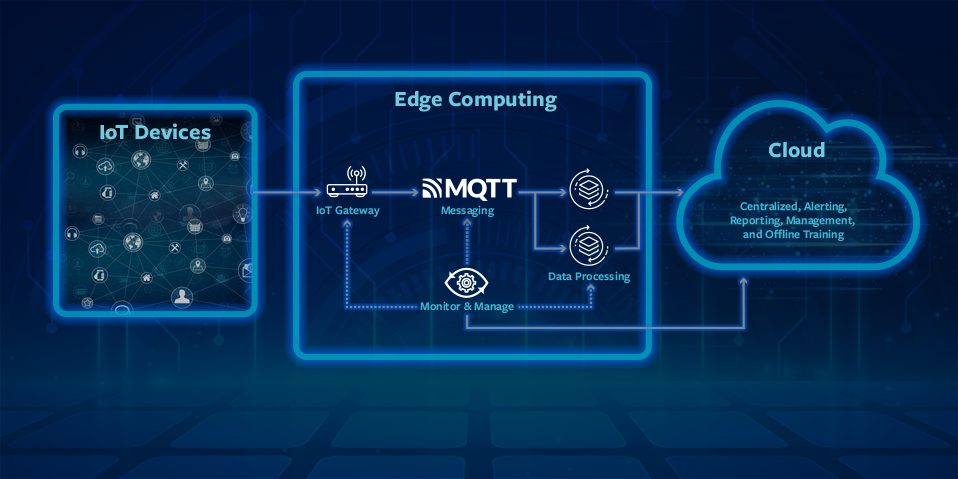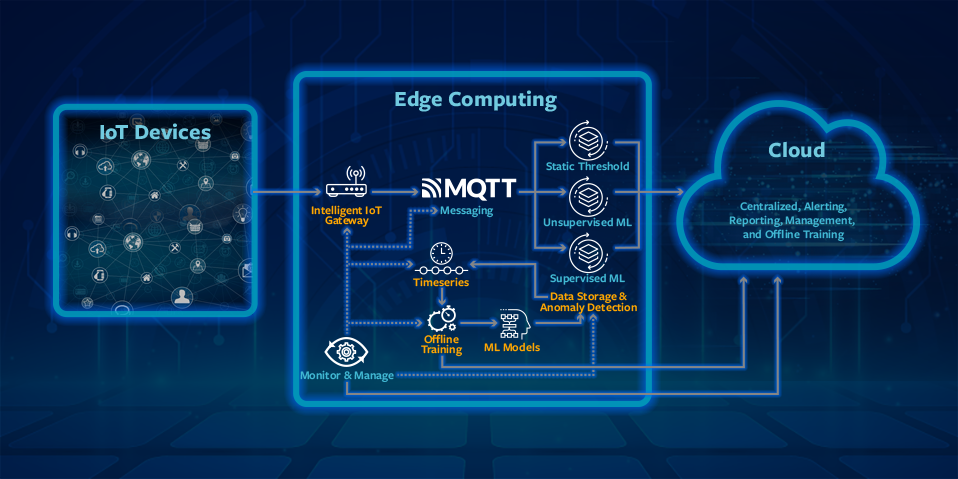An anomaly, defined as any change in usual behavior, can provide early warning of a problem. For example, anomalies in an Internet of Things (IoT) sensor’s timeseries data can indicate a failure in a manufacturing unit. However, detecting anomalies in real time is becoming more and more challenging. Traditional anomaly detection methods such as creating visualizations and dashboards can’t keep pace with the extreme data volumes and velocity of today’s IoT. In this blog, we’ll look at other methods.
Static threshold-based alerts can be configured to detect anomalies. As a more automated approach, this is an improvement over traditional methods, but it still has several disadvantages, such as:
- Admins need domain knowledge to set the right thresholds
- Thresholds are not adaptive to data changes
- Static alerts are difficult to maintain in ever-changing environments
Supervised or unsupervised machine learning (ML)-based methods bring intelligence to automated anomaly detection. By continuously learning timeseries data behavior, the system becomes more adaptive to data changes and can better handle changing environments.
However, the volume of data generated by IoT devices is increasing with time, driving related increases in network bandwidth, storage volume, and compute. As a result, the use of centralized cloud resources for real-time IoT data processing is becoming more and more expensive and lengthening the latency in data processing.
Edge computing provides a more effective way to leverage ML-based anomaly detection. By shifting critical data processing workloads closer to the data source (IoT devices), you can reduce workloads on the cloud; ensure zero-latency data processing; improve response time; and decrease network load and cloud costs.
Edge computing can be also used to monitor machine health in real time to detect anomalies that might indicate a failure in a system. Zero-latency data processing makes it possible to report major incidents in near-real time and prevent system failures.
Edge computing architecture
There are several types of edge computing architectural models used in the industry, including 100 percent edge computing and hybrid models that combine edge and cloud computing. A generic architecture of this type is shown in Figure 1.

Figure 1: A generic architecture including edge computing and cloud computing
In this model, the IoT Gateway collects and receives data from IoT Devices using various IoT data protocols and pushes data to a Messaging layer. Data Processing components at the edge pull data from the Messaging layer, process it, and send insights to the Cloud for centralized alerting and reporting. A Monitor & Manage element reports operational issues to the Cloud and ensures that components are in synch with the configuration data centrally managed from the Cloud.
Edge computing deployment
The deployment of edge computing components, which can be based on scalability requirements, can be deployed together in a single board computer like Raspberry Pi, or across multiple devices in the same data center for greater scalability.
Real-Time IoT data anomaly detection
Figure 2 shows an architecture to implement edge computing for anomaly detection. This model is similar to the generic architecture described in Figure 1 with added intelligence.

Figure 2: Edge computing for real-time anomaly detection
In this model, an Intelligent IoT Gateway acts as a timeseries data router. The Messaging layer has separate queues for each anomaly detection method. Based on the anomaly detection methods being applied to specific timeseries, the Intelligent IoT Gateway makes routing decisions and puts data into the respective queues. Dynamic routing decisions are driven by the configuration. Configuration changes are made at the Cloud and applied on the Intelligent IoT Gateway by the Monitor & Manage element.
Anomaly Detection processors fetch data from the respective queues, detect anomalies, and report them to the Cloud. These processors also store timeseries into a Timeseries DB.
An Offline Training scheduled job periodically fetches bulk data from the timeseries DB, compresses data, and sends it to the Cloud to train ML models for supervised anomaly detection. The job also fetches ML models from the Cloud and stores them in an ML Models DB. A Supervised ML Anomaly Detector fetches ML models from the ML Models DB.
The Monitor & Manage element reports operational issues to the Cloud and ensures that components are in synch with the configuration data centrally managed from the Cloud.
Conclusion
The data volumes and velocity of a modern IoT implementation call for scalable, efficient, real-time anomaly detection. Edge computing makes it possible to leverage machine learning for IoT anomaly detection while avoiding high cloud costs and processing latency. By using the architecture described above, you can detect and resolve IoT failures quickly to ensure optimal service for your organization.







